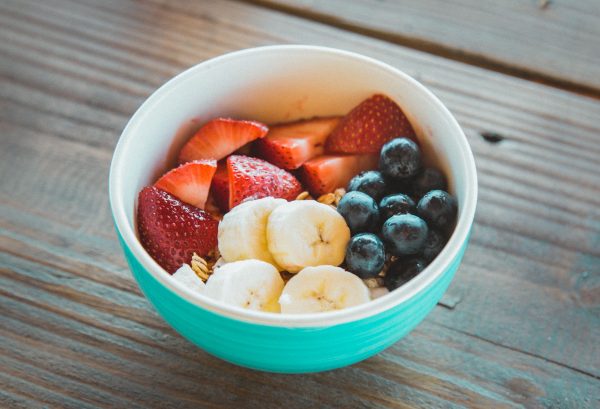How My Food Budget Changed When I Decided to Lose Weight

Photo by Dane Deaner (cropped) on Unsplash.
In the last 10 years, I’ve accomplished a lot. I’ve advanced in my career, I’ve finished my doctorate degree (while working full-time), my partner and I have bought a house, and I’ve had two kids. Making all those good things happen took a lot of work and, to be honest, a lot of dinner deliveries from Cleveland Wok and too many late nights fueled by ice cream and Diet Coke.
A few months ago, I decided that I wanted to prioritize my health and start making some better choices when it comes to food. I want to reduce my risk of diabetes and heart disease that run in my family. I wanted to reacquaint myself with the whole concept of “vegetables.” And, even though I’m super committed to being body positive and liking myself at any size, I can’t deny that I was also hoping I might lose some of the 60+ pounds I’ve gained while kicking ass at work and school.
Because I am a money nerd, I started tracking both my weight and how changing my eating habits would impact our family food budget. I’ve heard lots of conversation about how eating a healthier diet can be more expensive, so I wanted to see if both my waist and my wallet ended up getting smaller.
After nearly six months, the results have been surprising: changing my eating habits for the better is actually saving me money every month.
Before I break down the numbers, I should note that I’m not following any particular diet or weight-loss program. I’ve been focusing on reducing sugar and eating mostly unprocessed foods (lots of veggies, fruit, and meat). This strategy seems to be working, as I’ve been averaging a loss of about five pounds a month, which feels reasonable and sustainable for me. I’m going for progress over perfection, and feel good about making better choices 80-90 percent of the time.
Over the last few months, I’ve also seen a 10-30 percent reduction in our monthly food costs. Some of this savings comes from the fact that I’ve stopped eating out for lunch at work. Instead of spending $10-14 dollars on lunch from the cafeteria or nearby restaurant, I’ve been spending about $5 on a packed lunch: salad with protein (usually chicken), some fruit, a cheese stick, and a can of sparkling water. Given that I bought lunch almost every day, this savings is pretty significant.
Some of the savings also comes from the choices I’m making about what and where to buy the food we eat at home. For meat and fruit, we’re taking more advantage of our Costco membership and loading up there. On our last trip, we got two weeks’ worth of produce (carrots, spinach, bell peppers, strawberries, apples, and oranges) and meat (ground turkey and whole fryer chickens) for just under $50. I’ve switched to doing meal prep for the week on Sunday afternoons, which costs me time but means we’re less likely to grab convenience food or takeout during the week.
I’m also saving money by reducing the number of snacks and treats going into our grocery cart. I have very active kids, so we still get snacks for them, but I’ve eliminated the weekly pint of Ben & Jerry’s ($5), the sourdough bread I love for toast ($4), my beloved Golden Grahams that were a nightly pre-bedtime snack ($4), and the bottled ice coffee drinks that I grabbed as I walked out the door many mornings ($6). I still like snacks, but I’ve switched to frozen fruit or nuts (also purchased at Costco) which are both substantially cheaper than my previous choices.
We’re spending more money on certain types of food, but these cost increases have been mostly offset by related reductions. We’re spending more on eggs, but less on bread. More on bagged salad kits, less on frozen meals. More on sparkling water, less on juice or Diet Coke.
Interestingly, I’ve noticed that this shift toward healthier eating has also been saving me money in other areas. I’ve dramatically reduced my spending on clothing, as I don’t want to invest in clothes while I’m shifting sizes. I’m more inclined to ask a friend to go on a walk than to meet up for happy hour. I’m funneling these savings into a separate account for the clothes I’ll eventually have to buy if I continue to lose weight, and for a summer pool pass so I can add more exercise into the mix.
On a final note, I want to acknowledge that changing my eating habits hasn’t always been easy. Salad fatigue is a real problem, and sometimes I don’t want to have to remember to pack my lunch before I go to bed at night. But it is encouraging to know that my healthier food choices are saving me money — and will likely continue to save money in the long run if I can sustain these habits.
Wendy Robinson is a community college administrator in St. Paul, Minnesota. She’s probably eating a salad for lunch today. You can find her on Twitter as @wendyrmonkey.
This story is part of The Billfold’s Food Series.
Support The Billfold
The Billfold continues to exist thanks to support from our readers. Help us continue to do our work by making a monthly pledge on Patreon or a one-time-only contribution through PayPal.
Comments